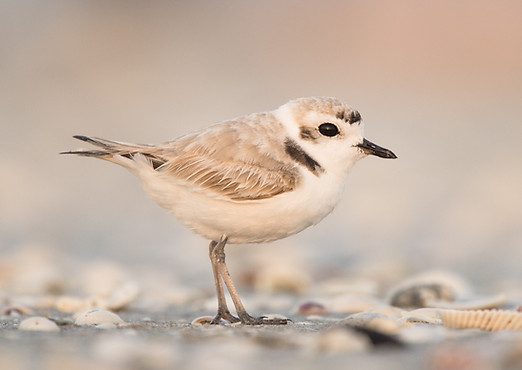AVIAN Research
Effects of Neonicotinoids on Ring-Necked Pheasant Physiology and Survival

Photo credit(s): WildMedia - Adobe Stock
Links: Madison Ramsey
The TCC is currently looking at the effects of a commonly used group of insecticides, neonicotinoids, on ring-necked pheasant physiology and survival. Neonicotinoid use is abundant on crop fields, where pheasants can come into direct contact with the chemicals, or the chemicals can be dispersed by wind and water runoff, potentially affecting breeder stock on nearby properties. With consistent yearly declines noted for ring-necked pheasant populations in Texas, this has become an area of research interest. Results will help pheasant breeders, land managers, and hunting enthusiasts , as well as potentially provide insight into neonicotinoid effects on other Texas upland game birds and members of Family Phasianidae.
Mottled Duck and Black Rail Project

Photo Credit: Jesse Huth / Cornell Lab
Links: NOAA RESTORE 2019 Awards, Karen Hondrick,
This research is a collaboration between National Ocean Service (NOS), National Oceanic and Atmospheric Administration (NOAA), and Department of Commerce (DOC) as part of the NOAA RESTORE Science Program. As part of this larger Gulf Coast research project, TCC will look at fire effects in Gulf of Mexico marshes, including historical perspectives, management, and monitoring of mottled ducks and black rails.
Snowy Plover Ecology

Photo Credit: rayhennessy / Adobe Stock
Dr. Conway has been researching snowy plover ecology since his own dissertation research began in 1998. There have been countless collaborators and students involved over the years.
Through the years Dr. Conway and TCC have investigated the following:
-
Population ecology of both inland and coastal breeding birds
-
Survival and population trends of inland plovers
-
Snowy plover breeding ecology and crypsis
-
Nest site selection, spatial patterning, and thermal ecology
-
Nest success and offspring sex ratio adjustment
-
Development of a novel nest trap system
-
Environmental availability and prey bioavailabity of toxic heavy metals, as related to plover exposure, internal concentrations and implications.
Earlier Mottled Duck Research

Photo Credit(s): Tommy Quarles | Cornell Lab
Links:
The TCC has had previous research projects looking at the ecology of mottled ducks (Anas fulvigula) within the Texas Chenier Plain Wildlife Refuge Complex with U.S. Fish and Wildlife Service. From 2009-2011, satellite platform transmitter terminals (PTTs) were used to track movement patterns and monitor adult female survival through 2012. This data provided invaluable information from which to base management actions that maximize the availability of wetlands and associated uplands during hunting seasons and drought conditions. From 2010-2012, the TCC explored the blood lead concentrations to identify more recent exposure and found that, despite lead shot bans enacted over 25 years ago, blood lead concentrations remain elevated. Identifying available sources of environmental lead may be important for minimizing exposure.
American woodcock migratory connectivity and lead toxicity

Photo Credit(s): Adobe Stock
From 2010-2012 the TCC investigated the landscape-scale ecology of American woodcock wintering in East Texas to produce an estimate of occupancy and presence using a trained pointing dog on GPS-tracked surveys. Researchers estimated woodcock detection rates, occupancy, and density as related to habitat quality and quantity. Stable isotopes from nationally harvested subadult woodcock were used to delineate migration corridors and connections between natal and wintering grounds. These data helped update and validate winter habitat models and migratory corridors for American woodcock.
Eastern Wild Turkey Ecology and Management

Photo credit(s): Ken Orich | Cornell Lab
The TCC has a long history with wild turkey health and ecology research, including past inquiries into reproductive ecology, nest site selection, turkey predation in East Texas, and how they relate to management of eastern wild turkeys in Texas. This early research culminated in the development of criteria that would greatly improve the success of later turkey "Super Stocking" translocation efforts, and reduce wasted time and money for landowners and TPWD.
Today, we are revisiting turkey topics with old partners. Working again with the National Wild Turkey Federation and Texas Parks and Wildlife Department, we are investigating post-translocation population genetics and performing a range-wide health assessment in these old stomping grounds.
Black-Necked Stilt Nesting Ecology and Survival on the Texas Coast

Photo credit(s): Jeff Tell | Cornell Lab
Links: Thomas Riecke,
From 2011 - 2013, TCC investigated black-necked stilt nesting ecology, specifically nest site selection and nest survival, within Anahuac National Wildlife Refuge in Chambers Co, Texas. Additionally, lead (Pb) levels in blood were investigated for potential toxicity issues. This research was performed in collaboration with U.S. Fish and Wildlife Service.

